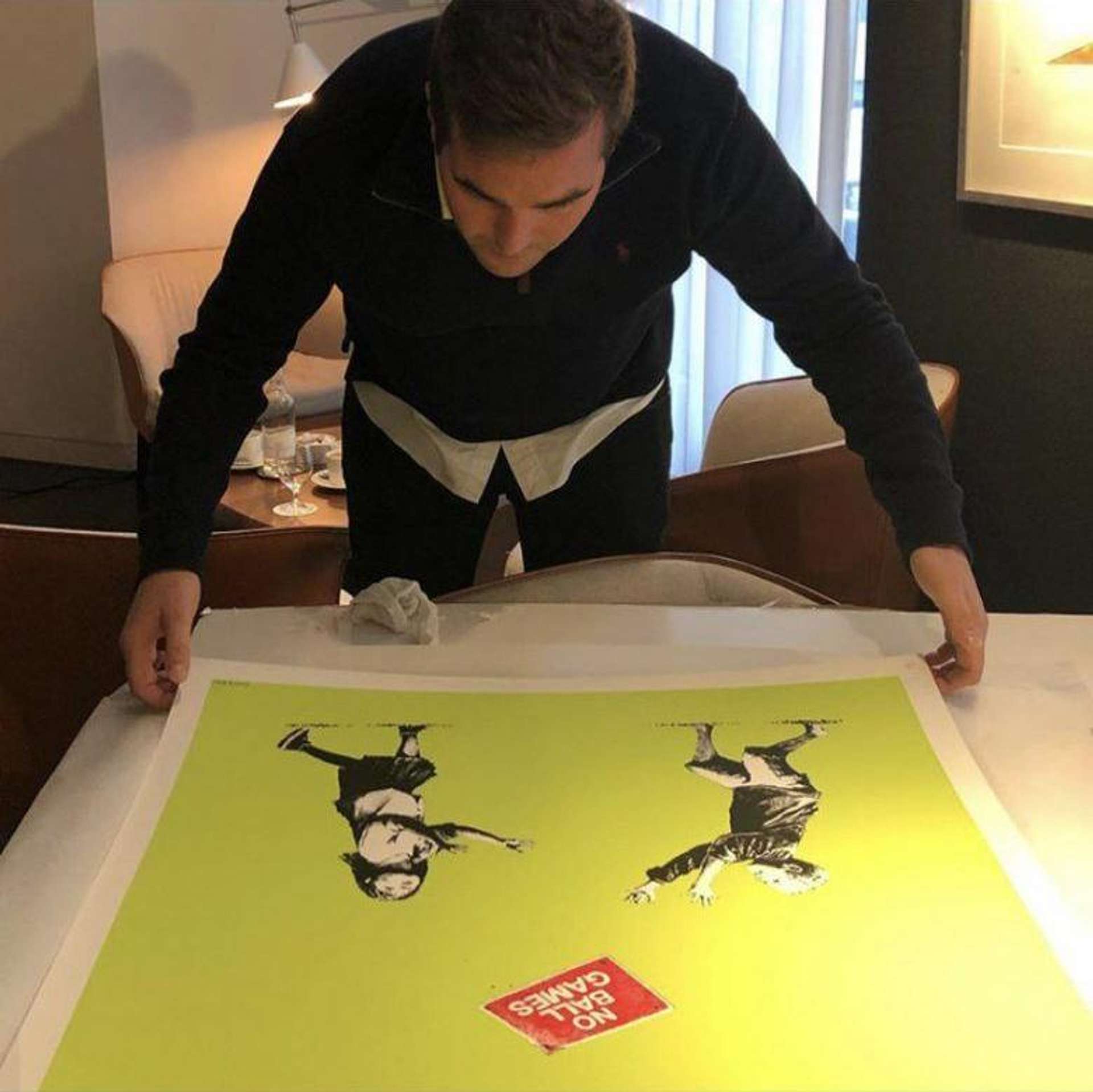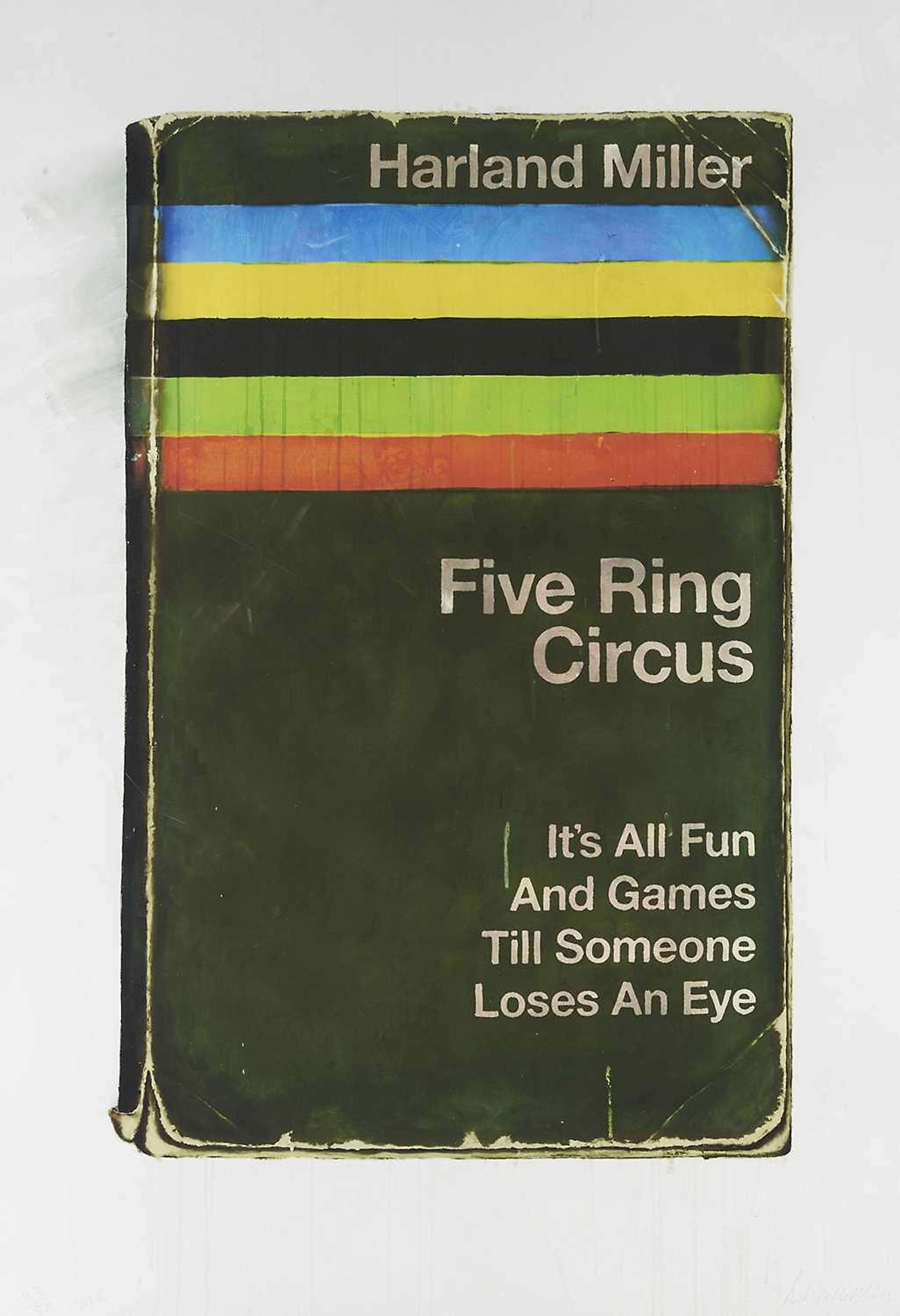A Guide to Restoring and Caring for Modern and Contemporary Prints

Market Reports
From climate control and lighting to professional framing and conservation, preserving modern and contemporary prints begins with knowing how to look after them. To help collectors navigate the intricacies of print care, we spoke with Fine Art Restoration Company and MyArtBrokers’ Modern and Contemporary Print specialist team to answer the most frequently asked questions around collecting and caring for your artworks.
What Should You Look for When Buying an Art Print?
Assessing the condition of a print before purchase is essential to safeguarding both its aesthetic and financial value.
When evaluating a modern or contemporary print, it’s important to look beyond the image itself. We strongly recommend viewing the artwork under normal, raking (angled), and transmitted (backlit) light where possible. This reveals surface imperfections, inconsistencies in texture, or issues with paper quality that may not be visible otherwise. MyArtBroker specialists can assist with this process and, when possible, help arrange viewings outside the frame.
Collectors should pay close attention to the edges of the artwork, which are often obscured by mounts or frames. These areas can show vital signs of condition issues such as handling dents, water damage, or acidic staining. Be alert to buckling, foxing (small brownish spots), discolouration, pressure marks, tears, tape residue, flaking pigment, or even early signs of mold growth. Fine Art Restoration Company emphasises that spotting foxing or mold “may suggest moisture problems behind the frame,” so it’s always a good idea to examine the wall side of the frame if something looks amiss. Even seemingly minor imperfections can impact the long-term stability or resale value of the work.
How Can a Condition Report Help?
A condition report provides a detailed health check of the artwork and offers peace of mind for collectors.
To the untrained eye, a print may appear flawless, but conservators are trained to detect underlying vulnerabilities that could worsen over time.
A condition report typically includes a detailed description of the print’s current condition, any previous restoration work, and recommendations for future care or treatment. It serves not only as a document of record at the point of acquisition, but also as a benchmark for monitoring changes over time. For collectors, especially those buying at auction or in secondary markets, this documentation is invaluable when assessing authenticity, value, and potential conservation needs.
Why Is Print Conservation and Restoration Important When Collecting Art?
Conservation protects your investment while preserving an artwork’s cultural, historic, and emotional value.
Contemporary and modern prints are more than decorative objects; they are cultural artefacts embedded with meaning. Conserving them ensures their longevity and accessibility for future generations.
Restoration, meanwhile, can improve the visual integrity of a piece and stabilise any existing damage. However, it’s essential to approach conservation with care. Fine Art Restoration Company explains that “while tears may need to be repaired and staining removed, every restoration we carry out prioritises the artistic integrity of the print. We work in minimal stages, stopping treatment if there’s any risk of adverse effects." Engaging with trained professionals ensures that any treatment is reversible, minimally invasive, and in keeping with the original intent of the artist. Collectors should consult conservators before undertaking any conservation work and remember that the goal is not perfection but preservation.
 Ingrid Bergman, Herself (FS II.313) © Andy Warhol 1983
Ingrid Bergman, Herself (FS II.313) © Andy Warhol 1983How Should You Display a Print Safely?
While it’s tempting to hang a prized Banksy or Andy Warhol in a prominent spot, environmental factors must be carefully considered. Works on paper are particularly vulnerable to light damage, both from UV and visible spectrums, as well as to heat, moisture, and airborne pollutants.
Avoid displaying prints in areas with direct sunlight, near radiators or vents, or in rooms with high humidity such as kitchens, bathrooms, or pool houses. UV-filtering glass offers some protection but does not block all harmful wavelengths. Even minor preventative measures, such as drawing curtains when not in the room or switching off overhead lighting, can significantly prolong a print’s life. Climate-controlled environments are ideal, and art-specific lighting can offer safer display options.
What Is the Best Way to Frame a Print?
A well-executed frame protects a print from environmental stress while complementing its visual appeal.
Framing is a fundamental aspect of conservation, and should be built to archival standards, using acid-free and inert materials that won’t leach harmful substances over time.
Mounting methods are also critical. Artworks should never be glued down or placed in direct contact with glazing. Instead, Fine Art Restoration Company recommends using conservation-grade Japanese tissue hinges or photo corners for more delicate works, ensuring the print “moves naturally with changes in humidity without tearing away from the mount.” Mount boards should be 100% cotton rag or acid-free alpha cellulose to avoid acid migration, which can cause yellowing or brittleness. The team also cautions against lining prints with linen (a traditional practice), explaining that “linen can become brittle and eventually degrade the paper over time,” which is why they opt for non-acidic Japanese tissue when reinforcement is necessary.
Collectors should also plan to check frames every 5-10 years, especially if the artwork has been on display. Materials can degrade over time, and regular checks help catch issues early.
How Should You Store a Print Not on Display?
Proper storage is just as important as careful display, especially for prints not currently in rotation.
Prints should be stored in a stable, dark, and dry environment to avoid damage from light, heat, or atmospheric pollutants. Flat storage is generally recommended, as rolling can stress the paper and lead to creasing or cracking, especially in older works.
Wrap each print in acid-free tissue or glassine paper and place it in a purpose-built, acid-free folder or box. These containers should be rigid enough to prevent bending and large enough that the print does not press against the edges. Avoid plastic sleeves or adhesive materials, which can trap moisture and cause surface sticking or chemical reactions.
It’s also good practice to label stored prints clearly and handle them with gloves or clean, dry hands to prevent the transfer of oils or residue. Always consult a conservator before investing in storage materials, as even well-intentioned products can have hidden risks.
Can a Damaged Art Print Be Repaired?
While not all damage is reversible, professional conservation can often restore stability and visual coherence.
Collectors may be distressed to find signs of foxing, tears, staining or faded ink, but such issues can often be treated or stabilised with expert care. The success of any conservation work depends on the print’s materials, condition, and the nature of the damage.
Some treatments, like stain reduction, deacidification, or consolidation of flaking ink, can make a significant difference, but results vary. More importantly, improper restoration or DIY fixes can cause irreversible harm.
The best approach is preventative: frame carefully, store properly, handle minimally, and consult professionals early. Getting these steps right from the beginning will preserve the print’s condition, appearance, and market value.
For any questions relating to the caring or condition of your print, do not hesitate to contact our recommended conservators Fine Art Restoration Company.







